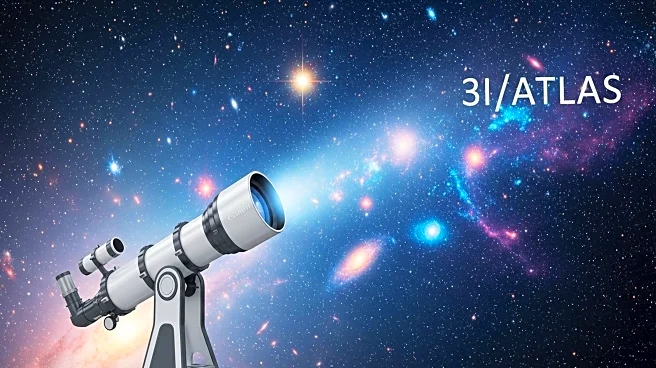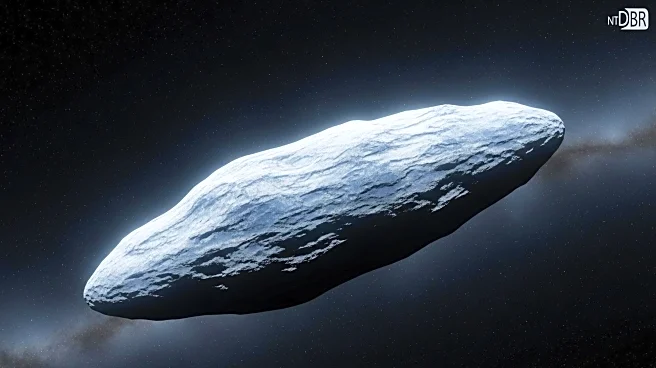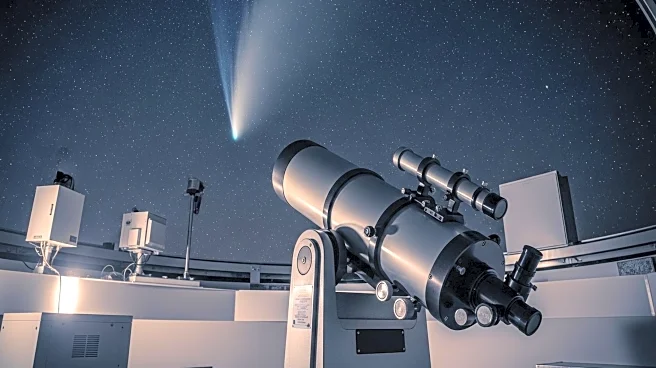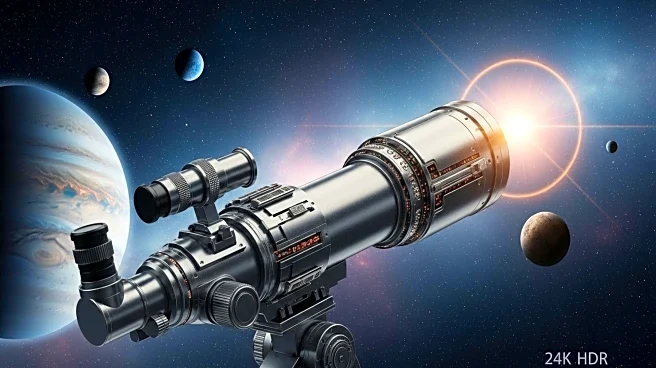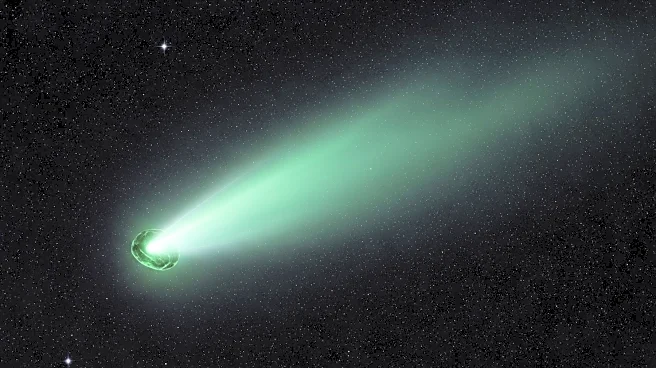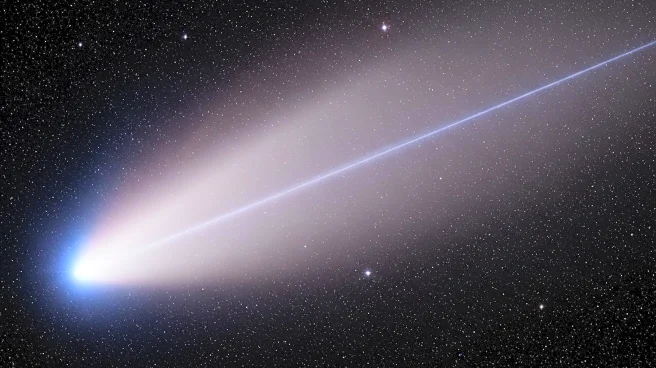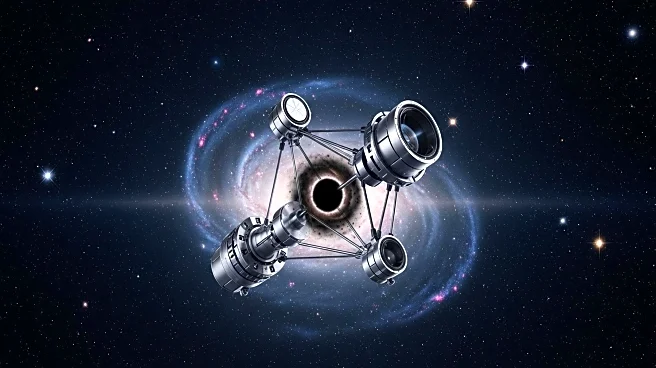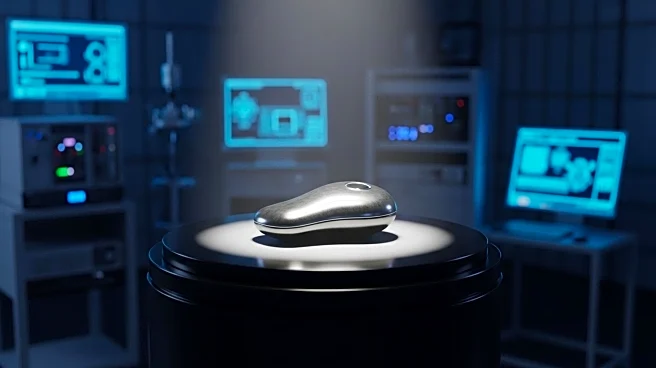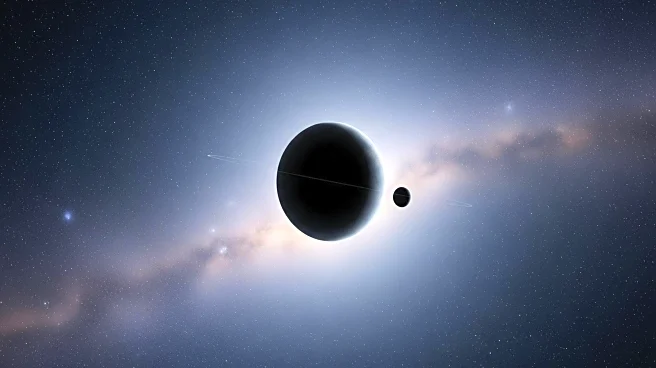What is the story about?
What's Happening?
Astronomers have detected a new interstellar object, named 3I/ATLAS, marking the third such discovery. Initially thought to be an asteroid, it was identified as a comet due to its high velocity, exceeding the solar system's escape speed. Observations reveal a teardrop-shaped dust cocoon around its nucleus, with unusual polarization and a high carbon dioxide content compared to solar system comets. The object is traveling at approximately 60 kilometers per second, making it the fastest recorded interstellar visitor. The discovery was made by the Asteroid Terrestrial-impact Last Alert System (ATLAS) on July 1, and further studies are being conducted using telescopes like Hubble and the James Webb Space Telescope.
Why It's Important?
The identification of 3I/ATLAS as an interstellar comet provides valuable insights into the composition and behavior of objects from outside our solar system. This discovery could enhance understanding of planetary formation processes in other stellar systems. The comet's unique characteristics, such as its polarization and chemical composition, challenge existing models of cometary behavior and may lead to new theories about interstellar objects. The presence of such objects in the solar system suggests a higher frequency of interstellar visitors than previously thought, potentially impacting future astronomical research and exploration strategies.
What's Next?
Astronomers plan to continue observing 3I/ATLAS as it approaches the sun and reappears in December. The comet's trajectory will allow for extended study over the next year, providing opportunities to gather more data on its composition and behavior. The Vera C. Rubin telescope in Chile may facilitate the discovery of additional interstellar objects, enhancing the understanding of their frequency and characteristics. Researchers are also preparing for the comet's close approach to Mars, which will allow for high-resolution imaging by the Mars Reconnaissance Orbiter.
AI Generated Content
Do you find this article useful?
